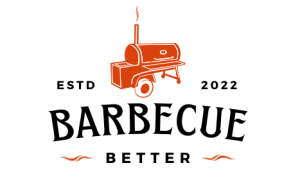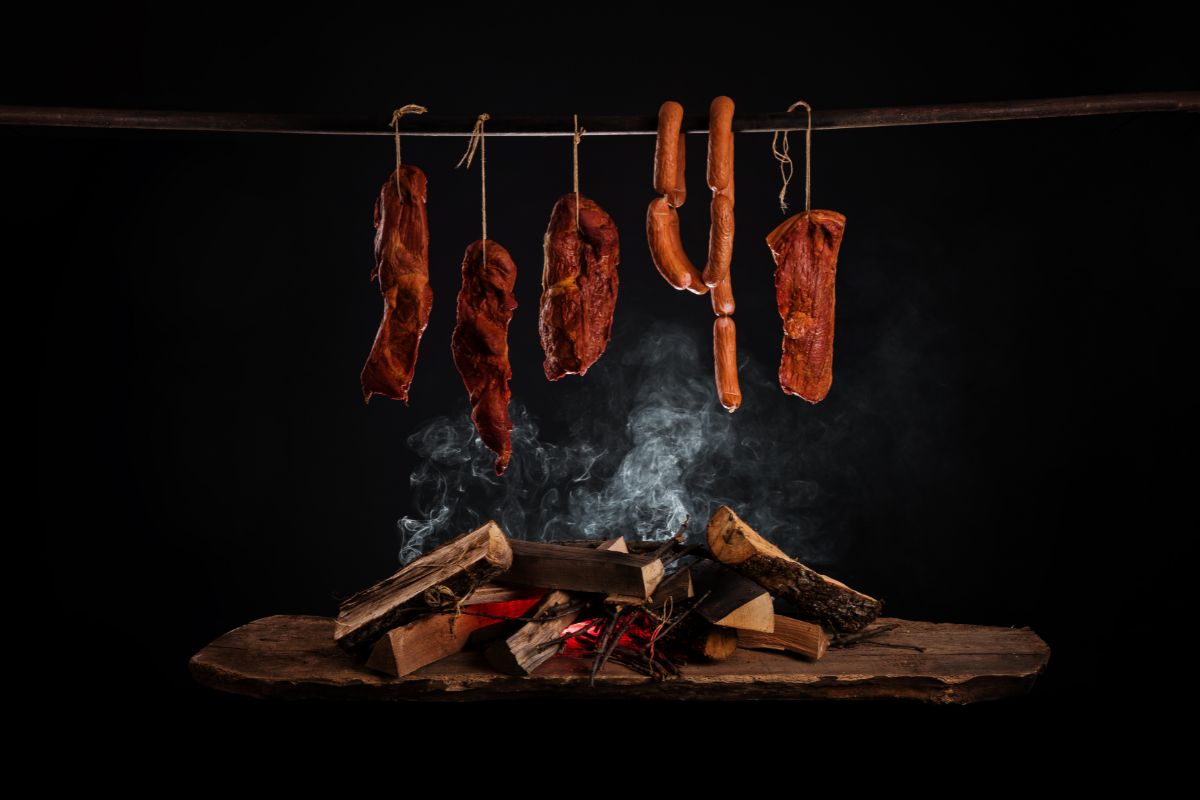The main difference between a hot smoker vs cold smoker is the time it takes to smoke food - cold smoking takes longer. Some types of food are better suited for a hot smoking method because hot smoking cooks the food while smoking it. Cold smoking is better for delicate fish, cheese, and nuts, and infuses these products with smoke over a longer time without cooking them.
Key Differences Between Hot Smoking and Cold Smoking
Hot and cold smoking are two cooking techniques to flavor and preserve food using smoke but the way in which they affect food products differ.
Hot Smoking
Hot smoking involves exposing the food to smoke and heat, typically between 160°F and 250°F for several hours to cook and infuse it with a smoky flavor.
Hot smoking requires wood chunks, pellets, or sawdust (and sometimes a water pan to control the temperature). It is often used for meats, such as pork, beef, and chicken, as well as vegetables. The disadvantage is that this cooking method doesn’t preserve meat that well.
Some benefits of hot smoking food include:
- It allows the food to be cooked and flavored at the same time, which can save time and effort.
- The smoke can add a smoky flavor to food in a short amount of time.
- It can be done in different types of smokers including pellet smokers with wood smoke, or electric smokers.
- You can broil the food at a high temperature right at the end to ensure a great bark.
Cold Smoking
Cold-smoking food involves exposing the food to smoke at a low temperature, typically in the temperature range of 68°F to 86°F in a smoking chamber or cold smoke generator (while smoke comes out of the firebox).
You’d have to do this for extended periods, often several days, weeks, or months.
Cold smoking is often used for more delicate foods, such as cheese and fish, the higher temperatures of hot smoking would damage them. It is a way to add flavor to foods without cooking them and is often used in conjunction with other cooking methods such as curing, brining, or grilling.
Some benefits of cold smoking food include:
- It allows the food to be flavored without cooking, which can help preserve the natural texture and flavor of the food.
- The intense smoke flavor can add depth and complexity to food.
- It ensures longer food preservation, extending shelf-life.
It’s important to note that cold-smoking meat doesn’t cook meat.
Best Products for Hot Smoking
Here is a list of products perfect for hot smoking:
- Beef brisket
- Beef or pork ribs
- Bratwurst
- Corned beef
- Pork belly
- Pork chops
- Poultry (chicken & turkey)
Best Products for Cold Smoking
Here is a list of products perfect for cold smoking:
- Bacon
- Cheese (such as cheddar, gouda, and brie)
- Jerky
- Nuts (such as almonds and pecans)
- Sausage
- Smoked fish (salmon, trout, mackerel, sardines, whitefish, tuna)
Some of these products are low risk, but others can be dangerous if not handled with care. Salmon and other types of fish can be the perfect breeding ground for botulism. To prevent this, cook or cure the meat before smoking it.
How to Hot Smoke Food
- Hot smoking is suitable for many types of meat and products. Pick one well-suited to hot smoking, such as beef brisket or ribs.
- Prepare the food according to your recipe. For example, you may need to trim excess fat from the meat, brine it, or coat it with a dry rub.
- Preheat your smoker to the desired temperature according to the manufacturer’s instructions. This will often be at smoking temperatures of around 225°F to 275°F (107-135°C).
- Place the food in the smoker, leaving enough space to allow the smoke to circulate. Ensure that the lid is closed most of the time.
- Add wood chips to the smoker according to the manufacturer’s instructions. Different types of wood will impart different flavors to the food.
- Allow the food to smoke for the recommended amount of time according to your recipe, checking the internal temperature of the meat with a meat thermometer to ensure it is cooked to the desired doneness.
- Once the food is cooked to the desired doneness, remove it from the smoker and serve it with your favorite side dishes!
How to Cold Smoke Food
- Cold smoking is suitable for a wide range of meats and products. Always choose high-quality and fresh ingredients to cold-smoke.
- Depending on the type of food you are cold smoking, you may need to prepare it ahead of time before you can smoke it. For example, you may need to brine or cure the meat.
- Preheat the cold smoker/smokehouse according to the manufacturer’s instructions. This typically involves filling the smoke generator with wood chips and lighting them to produce smoke.
- Place the food in the cold smoker leaving enough space to allow the smoke to circulate.
- Allow the food to cold smoke for the recommended time according to your recipe, checking it occasionally to ensure it is not exposed to too much or too little smoke.
- Per the USDA, ensure you have two thermometers, one for the smoker and one for the meat.
- Once it has been cold-smoked for the desired time, remove it from the smoker and serve it immediately. Alternatively, you can store the food in the refrigerator or freezer until you are ready to use it.
Is Cold Smoking Healthier than Hot Smoking?
It is not accurate to say that one method of smoking food is healthier. Hot and cold smoking can be healthy or unhealthy depending on the food being smoked and the preparation process.
Smoking food can add flavor and depth to the food, and both hot and cold smoking can help preserve the food. However, it’s essential to consider the overall nutritional content and preparation of the smoked food.
How Does Smoking Meat at a Higher Temperature Affect the Flavor?
One way that hot smoking can affect the flavor of the meat is by infusing it with smoky flavors from the wood used in the smoking process. The type of wood used can significantly impact the flavor. Woods such as hickory and mesquite add a bold, smoky flavor, while woods such as apple and cherry add a more subtle, sweet flavor.
In addition to the smoky flavors, hot smoking can cause Maillard reactions in the meat. The Maillard reaction is a chemical reaction between the amino acids and sugars in the meat that occurs when the meat is exposed to heat and develops new flavors and aromas. The Maillard reaction can add depth and complexity to the flavor of the meat and contribute to its overall taste and appearance.
Finally, hot smoking can also cause the fat in the meat to render, or melt and drip away, which can affect the flavor and texture of the meat. The fat can add moisture and flavor to the meat, but if it is rendered away, it may become dry and less flavorful.
Is it Better to Preserve Meat by Cold Smoking or Hot Smoking?
Which method is better for preserving meat will depend on the type of meat you are working with and the storage conditions. For example, cold smoking is a good option for preserving lean meats such as salmon and whitefish, while hot smoking is better suited to fattier meats such as pork ribs and beef brisket.
Hot-smoked products will have a shorter shelf life than cold-smoked products, so cold smoking is better suited for preserving food for long periods.

